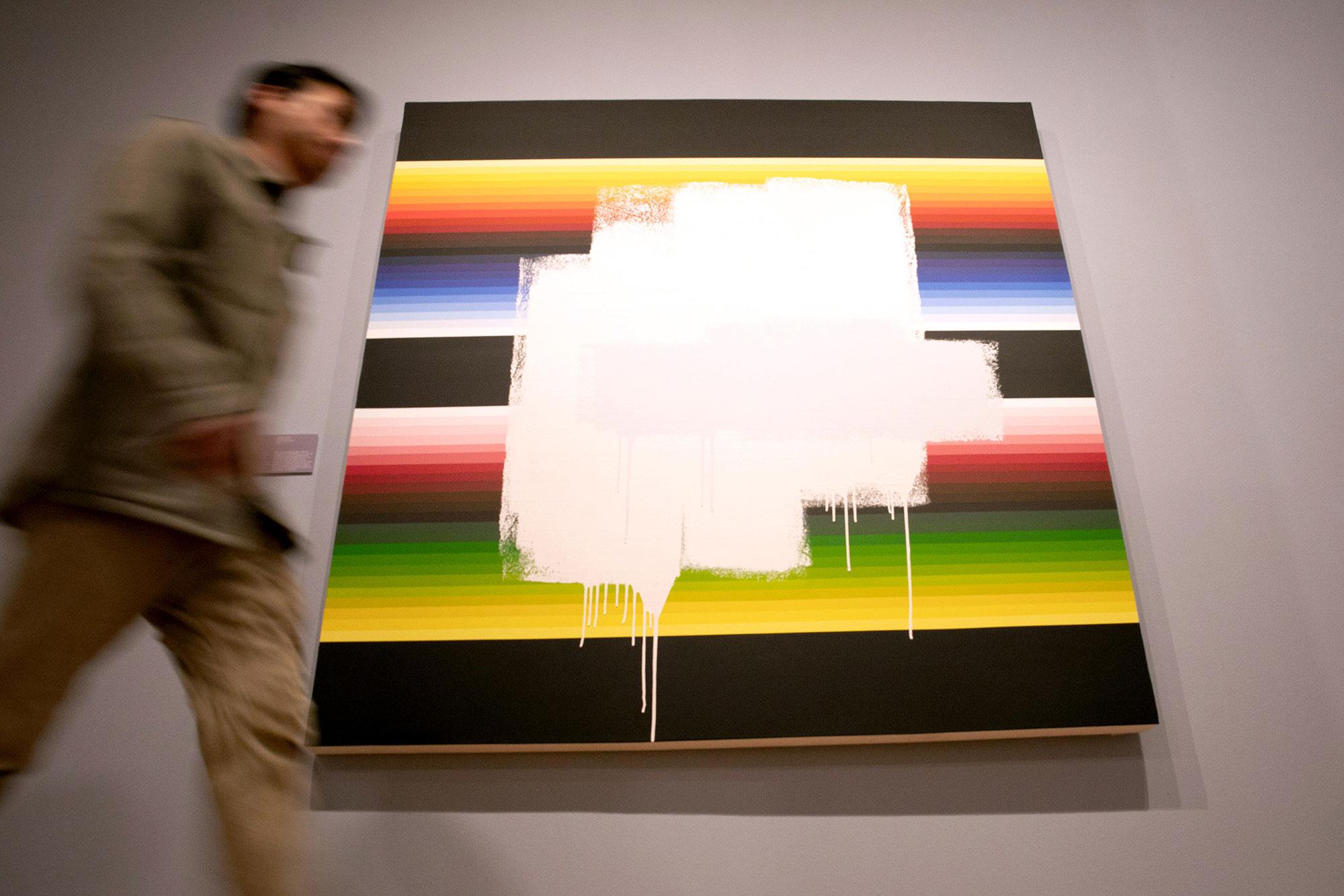
A colorful and powerful figure greets visitors to Denver’s Museo de las Americas. Quetzalcoatl floats over the heads of guests with a royal feathered coat in jewel-toned blue, purple, green and pink. It’s one of the first pieces in the museum's new exhibit, “Smoking Mirrors: Visual Histories of Identity, Resistance & Resilience.”
Emanuel Martinez’s handmade Quetzalcoatl is a departure from the artist’s usual large-scale murals. However, he said he has a long history with the winged god as one of the early artists in Colorado’s Chicano Mural Movement.
“I used to write an article for El Gallo newspaper at the Crusade for Justice in 1967-68. I originally wrote an article about Quetzalcoatl and the symbolism that he represented,” Martinez said. “The first time I used Quetzalcoatl was in 1970, when I painted the mural at La Alma Park, Lincoln Park on a building that's no longer there, they knocked it down.”
Artist David Garcia’s interpretation of Quetzalcoatl’s enemy Tezcatlipoca sits just below the airborne figure. In some interpretations, the two dueling entities represent creation and destruction.
“That duality you were talking about [between]the serpent Quetzalcoatl and Tezcatlipoca, and for me, actually represents the earth and sky,” said Garcia. “So, Tezcatlipoca is like the universe, like the stars, and then Quetzalcoatl is like the earth.”
Tezcatlipoca’s name translates to smoking mirrors, a term for obsidian, a volcanic stone. Its smooth texture can be polished into a glassy reflective surface that was seen as a portal to another dimension. At the Museo exhibit, a large piece of obsidian sits near the entrance as guests pass the two warring gods.
The exhibit draws from histories both real and mythical. Many are reflections of indigenous Mexican cultures, how colonization affected them and how ancient traditions still survive.
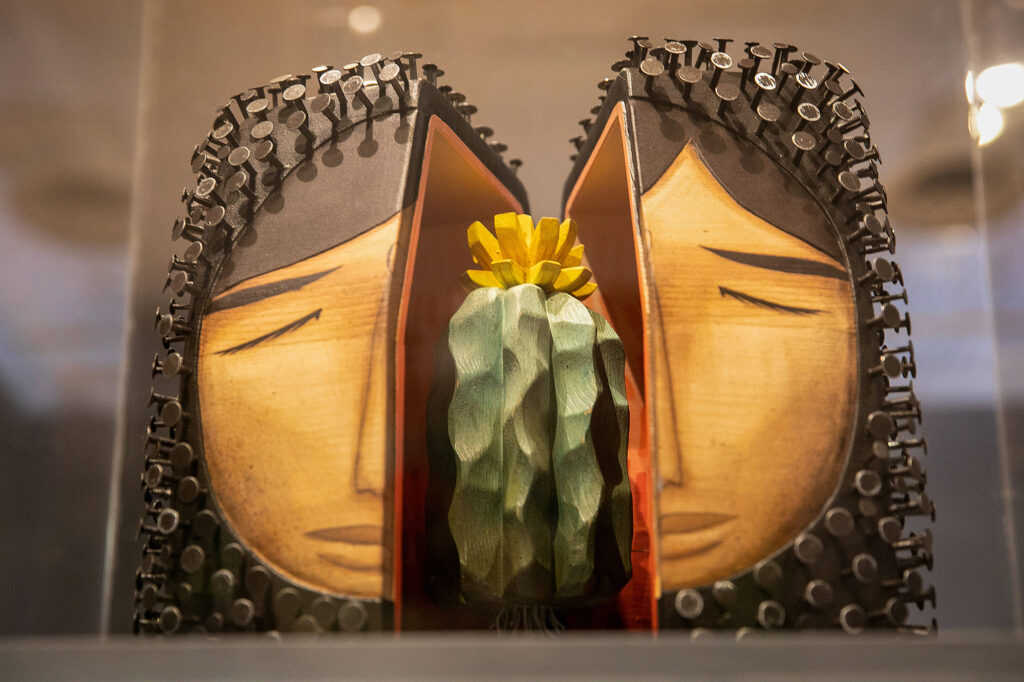
The artists span different mediums and generations. One of the exhibit’s curators, Lucha Martinez de Luna, is the director of the Chicano/a Murals of Colorado Project. It’s a group dedicated to protecting and preserving the state’s array of murals. Many of the artists featured in Smoking Mirrors are muralists who were challenged with creating something for an indoor exhibition, like Lucha’s father, Emanuel.
“I've always been around art and especially public art in murals and participated in helping him paint the murals and also watching how much it affected the community to first have those murals painted in their public spaces,” Martinez de Luna said.
Other artists in the show look back at historical figures, named and unnamed, and their influences on their communities and subsequent generations. There’s a celebration of survival throughout the space.
For local artist Alicia Cardenas, looking into a smoking mirror is a way to reconnect with her culture on a deeper level.
“We see ourselves in a regular mirror. That's our conscious mind,” Cardenas explained. “You see yourself in a smoking mirror and that's the other you, and a lot of people think that other you is a negative side of you, but it's not. It's just the other you, it’s the deeper you. It’s the spiritual you.”
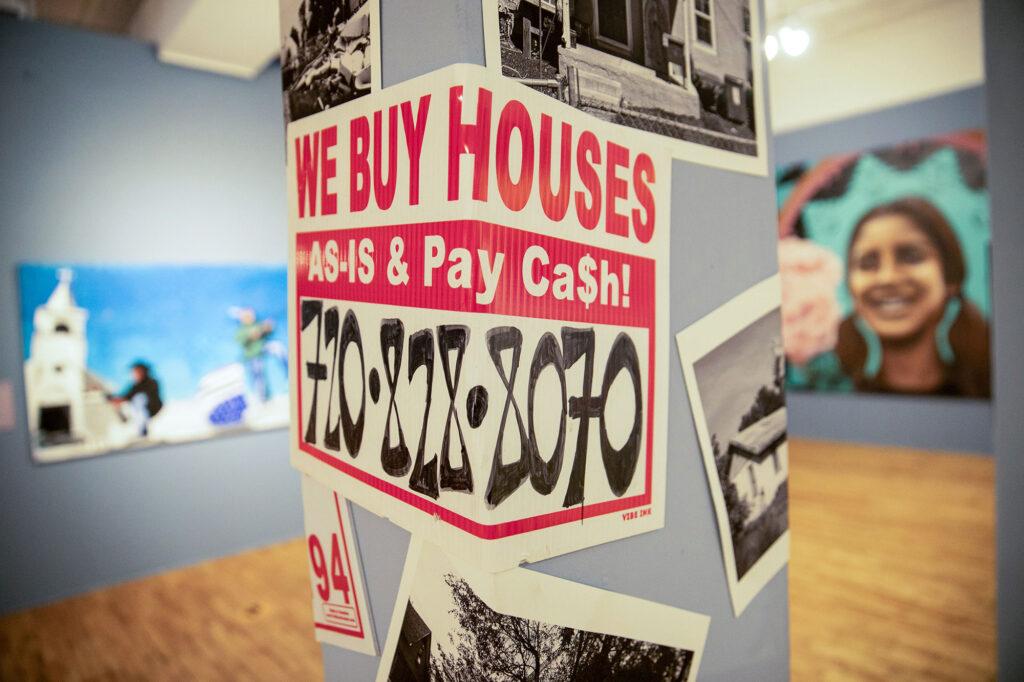
Cardenas’ painting “La Llorona” is a riff on the old folk tale. Instead of depicting the woman as a threatening ghost mourning her drowned children, Cardenas sees her as a misunderstood spirit. She used her view of a smoking mirror to portray La Llorona as a Mesoamerican figure who protects women and children.
“We don't trust ourselves enough,” Cardenas said. “We have these stories embedded into our DNA, but we look to anthropologists to tell us what happened and that's, to me, not the right way.”
Other artists comment on the more recent experiences of Chicano and Mexican American communities.
In Anthony Garcia's vivid painting “White Wash 2,” the bold colors of a serape are interrupted by white splotches of paint trying to replace the culture that was there. The work represents the violence of gentrification.
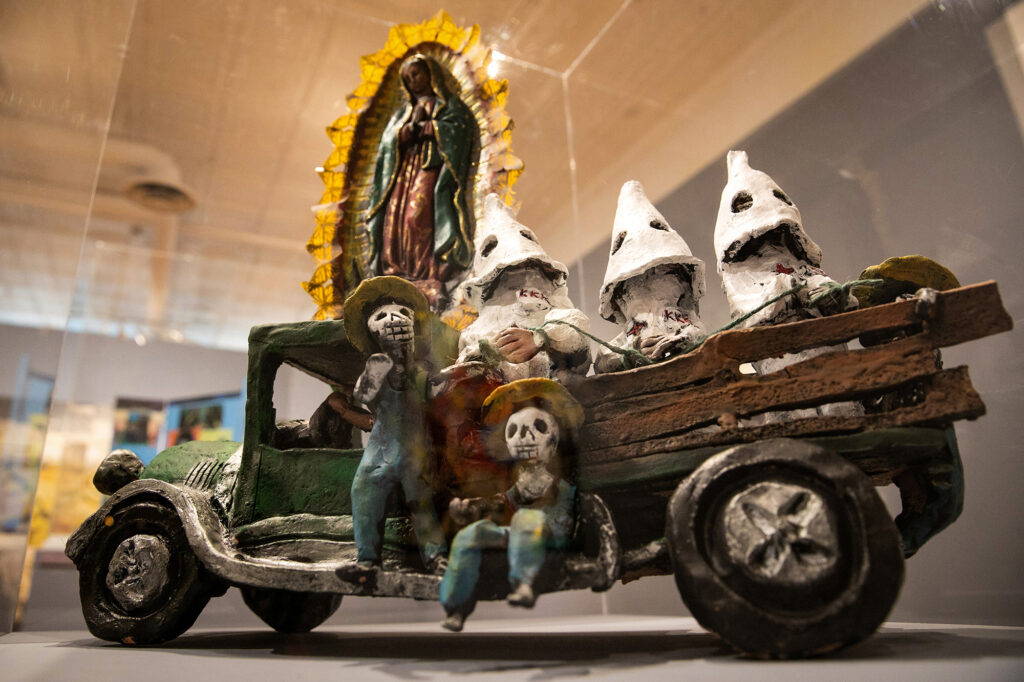
Cal Duran's "The Heroes of Longmont'' revisits a tragedy in the nearby Colorado town where members of the Ku Klux Klan murdered and lynched migrant farmworkers.
His clay sculpture celebrates the local community that rallied together to drive the KKK out of Longmont.
Nani’Chacon’s “Dine Creation Story” abstractly depicts a graceful figure overlayed with the image of a blue bird.
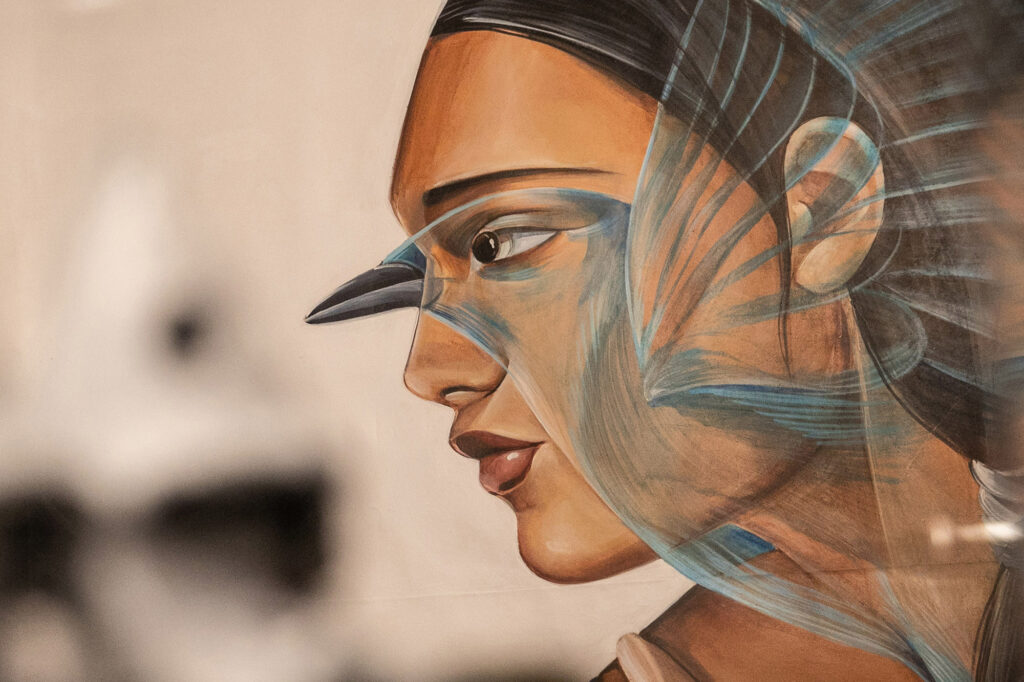
Over the last fifteen years, curator Martinez de Luna has also seen the destruction of her community's murals because of gentrification.
She says curating the “Smoking Mirrors” exhibit was a chance to think about the history we don’t want whitewashed.
“Hopefully the audience can start having these conversations of what I think our American history really tries to avoid and make it seem like it didn't happen,” Martinez said.
“Smoking Mirrors” is on display now through Feb. 26.
- Denver Art Museum’s Martin Building, renovated and ready, centers its vast art collection in the city once again
- With a new contract in place, the Colorado Springs Philharmonic plays on
- Meow Wolf launches in Denver, taking visitors (finally) to Convergence Station
- How did the Telluride Film Festival get big? Thank the awards season frenzy and the mines that once surrounded the town








